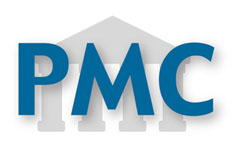Molecular analysis of exons 8, 9 and 10 of the fibroblast growth factor receptor 2 (FGFR2) gene in two families with index cases of Apert Syndrome
Abstract
Introduction:Apert syndrome (AS) is a craniosynostosis conditioncaused by mutations in the Fibroblast Growth Factor Receptor 2(FGFR2) gene. Clinical features include cutaneous and osseoussymmetric syndactily in hands and feet, with variable presentations inbones, brain, skin and other internal organs.Methods:Members of two families with an index case of ApertSyndrome were assessed to describe relevant clinical features andmolecular analysis (sequencing and amplification) of exons 8, 9 and10 of FGFR2 gen.Results: Family 1 consists of the mother, the index case and half-brother who has a cleft lip and palate. In this family we found asingle FGFR2 mutation, S252W, in the sequence of exon 8. Althoughmutations were not found in the study of the patient affected with cleftlip and palate, it is known that these diseases share signaling pathways,allowing suspected alterations in shared genes. In the patient of family2, we found a sequence variant T78.501A located near the splicingsite, which could interfere in this process, and consequently with theprotein functionAuthors
Downloads
Keywords
- Craniosynostosis
- Apert syndrome
- Cleft palate
- Mutation
- Intron
- FGFR2 gene.
References
Tiller G. Apert syndrome. Available in:http://omim.org/entry/101200http://omim.org/entry/101200. 15 January 2013
Bhatt S, Diaz R, Trainor P. Signals and switches in mammalian neural crest cell differentiation. Cold Spring Harb Perspect Biol. 2013;5(2)pii: a008326
Wilkie AO, Slaney SF, Oldridge M, Poole MD, Ashworth GJ, Hockley AD, et al. Apert syndrome results from localized mutations of FGFR2 and is allelic with Crouzon syndrome. Nat Genet. 1995;9:165–172
O'Neill M. Fibroblast Growth Factor Receptor 2. a Available in:http://omim.org/entry/176943http://omim.org/entry/176943 . 18 January 2013
Slaney SF, Oldridge M, Hurst JA, Moriss-Kay GM, Hall CM, Poole MD, et al. Differential effects of FGFR2 mutations on syndactyly and cleft palate in Apert syndrome. Am J Hum Genet. 1996;58:923–932
Riley BM, Mansilla MA, Ma J, Daack-Hirsch S, Maher BS, Raffensperger LM, et al. Impaired FGF signaling contributes to cleft lip and palate. Proc Natl Acad Sci. 2007;104:4512–4517
Ibrahimi OA, Eliseenkova AV, Plotnikov AN, Yu K, Ornitz DM, Mohammadi M. Structural basis for fibroblast growth factor receptor 2 activation in Apert syndrome. Proc Natl Acad Sci. 2001;98:7182–7187
Stanier P, Pauws E. Development of the lip and palateFGF signalling. Front Oral Biol. 2012;16:71–80
Hajihosseini MK, Wilson S, De Moerlooze L, Dickson C. A splicing swich and gain-of-function mutaton inFgfR2-III hemizigotes causes Apert/Pfeiffer syndrome-Like phenotypes. Proc Natl Acad Sci. 2001;98:3855–3860
Copyright (c) 2015 Universidad del Valle

This work is licensed under a Creative Commons Attribution-NonCommercial 4.0 International License.
The copy rights of the articles published in Colombia Médica belong to the Universidad del Valle. The contents of the articles that appear in the Journal are exclusively the responsibility of the authors and do not necessarily reflect the opinions of the Editorial Committee of the Journal. It is allowed to reproduce the material published in Colombia Médica without prior authorization for non-commercial use




















